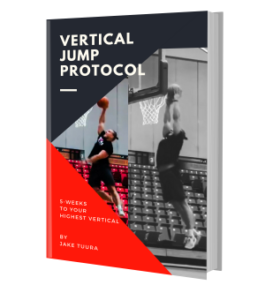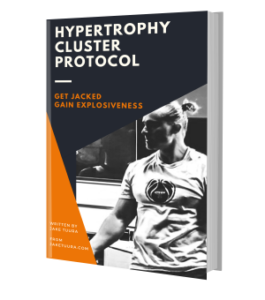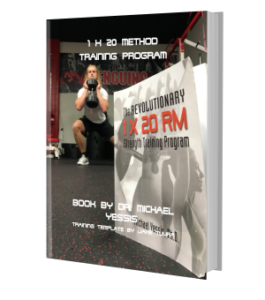Matt: “Where they [physical therapists] fail most is understanding the systematic approach to how do I scale dynamic movement?”
Matt: “A return to run protocol. And you’re like, great, you’re teaching someone how to plod on the street. Like that’s useless. This guy is gonna need to stop on a dime. He’s a tennis player and needs to hit a drop shot. Who knows how much force is going through his anterior knee.”
Derek: “We do well at the first phases of all the rehab stuff. Great. Now what’s your plan of action afterwards? Cool. We’re collecting more data than ever. We have force plates. We have jump mats. We have velocity-based training. What are you doing with that data now? You still don’t know how to program and how to scale this stuff. We’re still looking at really old data, really old protocols.”
Derek on getting the knee to bend again post-ACL: “At the beginning, there’s a lot of manual work that has to go into it. And there’s a lot of attention that needs to be paid to swelling because swelling can also shut down how the muscles are working. So when you’re paying attention to those sorts of things, making sure that, hey, the patella is moving because if you don’t have good patella mobility, now you can’t get into full extension. there’s so many pieces that play into how the knee is going to move in general.”
Matt on getting the knee to be comfortable bending: “Using a lot more oscillatory strategies where you start in a really small range of motion that you kind of bounce between, like the top of the movement and the bottom of the movement.”
Matt: “What is happening when we do dynamic movement? And I think that initial thing for a tendon issue would be everything is just staying really stiff because of that jolting effect. Everything’s like, shit, hang on boys.”
Matt: “When someone has an Achilles issue, patellar tendonitis is rife. If you’re inhibited to do something rapidly, you’re going to find a way and maybe be too compliant at the knee.”
Matt: “If they’re a wiry long athlete, they’re probably going to be able to do some plyometrics with their lower legs really effectively very early on. Because actually, do you know what? They get a lot of stability in the knee. There’s almost no compliance and they are just popping off their ankles.”
Matt: “Our goal is to get you into more compliant stuff quickly. Obviously we have to have a scalable system to get to it. And the dynamic stuff that’s really stiff is what could potentially damage them.”
Matt: “Certain people are gonna sit more suitably towards stiff stuff and your job is to drip feed in the compliance, and vice versa.”
Matt on how to be more compliant at the ankle: “So I think you’ve got to look at what mechanism is creating the tissue to change in length… So you’ve either got a forefoot planted and shin drop action that creates length through the posterior side, or you have a vertical shank of the shin where the heel drops.”
Matt on Achilles: “What would be the most potent stimulus? It would probably be barefoot on concrete landing in a highly plantar flexed way, right? And that is gonna give enormous forces to that Achilles.”
Matt on Achilles rupture: “I think that’s why we see that negative step rupture so commonly is that it is in its most vulnerable position. We don’t have any support. You never see the front knee is bent when they have that rupture. It’s always a terminal knee extension, no support from the knee. It’s just completely locked out. And then the ankle has to do everything to try and lock in position, then pivot off. It just has nowhere to go.”
Matt on people with Achilles pain: “People don’t like the heel drop as much as they prefer to have a planted foot and the shin to drop.”
Matt: “An indication of people that often get Achilles issues is when you see them running or doing bounding or dynamic movement is they get early heel lift because they are avoiding the Achilles going through that stretch.”
Matt: “The Achilles [rupture] is strange…My calcaneus is traveling backwards and my head’s traveling forward. It’s like both ends are getting away from each other.”
Matt: “I think your Achilles, you want to make it feel like it moves through a short range of motion. You do not really like the sensation of it actually going through a long range of motion at velocity. So if I can be brutally honest, the only real thing that I will train with that is obviously making sure that people are doing negative steps.”
Derek: “I think really padded [soft] shoes and super shoes [carbon fiber plates]… I think the extremes ⁓ have us training in a way that really doesn’t prepare us for a lot of different instances. In one case, our shoes are super padded and our feet really aren’t strong at all. And then on the flip side, wearing the super shoes while you’re relying on the shoe to do the work.”
Derek: “I think volume’s incredibly important. By the time you get to some of these high intensity sports and things, you should have already done so many tens of thousands or however many reps and however many hours of training going into it… When you start getting into any sort of the mechanoreceptors and stability for the joints and the tissues, it’s going to take that because those are essentially severed. So you need those connections to rebuild. You need to understand where you are, where the joint position is in space.”
Derek on snapdowns: “We get stuck on stupid things. Yeah, I get it. You want to work a range. You want to work down into this movement. You want to work on decelerative properties. Cool. Why are we still there at month five, six, and seven? Like, why was that your performance thing? Get away from it already. If you’re going to use it, cool. But then know how to get out of that. Know what the next level, know what the next progression is.”
Matt: “I like the idea of using compliant movement as well as stiff movement and how maybe there’s a lot more tendon issues that come in from using too much plyometrics because we’re doing the exact same thing every time. We are taking the tendon to a certain level and then that’s it, like a certain length.”
Matt: “I think that a variety is absolutely key and variety has to come from almost ludicrous volumes. And everyone is far too quick to chase this idea of intensity.”
Matt: “There’s so many more things to be gained in submaximal movement that you just can’t train that much in maximal movement. You can’t work on the technique, the proprioceptive awareness, all the other components that come with the neurological side that can be trained submaximally. Whereas when you’re training maximally, sometimes you can’t really think and you just have to do, and the body can’t really do much other than being like, survive.”
Derek: “Let’s say we have somebody who’s come in and hasn’t done any of this in either 10 years or ever, right?… I treat them how I would the kids. It’s all about exposure. It’s all about volume, multi-directional. And over time, you start to see these things develop and you start to see it come together.”
Matt on prolonged time off: “You’re a ticking time bomb. Like you can fire [neurologically], but your structures do not have the capacity to deal with that fire.”
Matt: “If you just do the maths, like how many max attempt jumps can you actually do if you were to genuinely like test the output, right? The submaximal stuff, if you’re straining it between like, we’ll speculate between 3 and 6%, you could do hundreds of them.”
Derek on a strongman with patellar tendinopathy: “What do you give somebody who’s already deadlifting, already squatting, already doing yoke, already doing log press, already doing all the lifts in the world, and he’s a world-class strongman? Are you doing any form of dynamic movement? And he was like, I haven’t done that in a long time. And then obviously had to progress it. But once he got back into it, all of that was fine.”
Derek: “I think for a lot of the shin splints and a lot of the coaching surrounding tendons. We just kind of just bomb this individual with a whole bunch of high intensity things, and then we wonder why things pop up, and then we’re playing from behind. And we’re still giving people foam rollers to kind of cure it. And it’s like, wait, you just really don’t have an understanding of how any of this works. What’s that foam roll gonna do?”
Matt: “I’m a big advocate for getting onto grass… Anything softer than grass and you’re not necessarily working at the faster dynamic ranges.”
Matt: “If you’re looking for the most stiff stuff, you need the stiffest surface. You want concrete barefoot. That’s the top of the pyramid. Are you gonna do it? Probably not.”
Matt: “The reactive stuff is very much protect… everything just holds on for their life at that point. And obviously a lot of people train that very like stiff, let’s like maximize stiffness and reactivity in this very tall, rigid motion. And what’s interesting is that so much of sport isn’t that at all.”
Matt: “There’s too many pulley systems happening. Something’s staying stiff, something’s being compliant, something’s pulling at a different time. And we talk about tendon stiffness and you’re like, yeah, but the Achilles is being really compliant here whilst the patella is being really stiff or vice versa. I’ve got maximal stiffness at my knee whilst my Achilles is doing something really compliant. So like, there’s just too much going on and it’s, again, it goes back to shit loads of different things and loads of volume.”
Derek: “With some of these high output works, it should feel and look effortless. Some of the best jumps we’ve seen, if you go back and watch Vince Carter, what is he doing? He’s having a blast up there in the air, right? Like, this isn’t some straining, crazy effort.”
Derek on habitual loading adapting a tendon: “that doesn’t just show up in tendon tissue. That shows up with ligaments and how they’re able to stabilize and what their exposure is. And it also shows up in osteos tissue and bone tissue. So when they looked at runners and they said, hey, where in the bone is this developing or getting thicker and more dense? It’s in the plane of the sagittal plane of how you’re moving. But if you take someone who is multi-directional, the bone builds out in the different directions.”
Matt: “I recently had an Achilles issue and I am teaching a course at the moment where I had to literally show people some of these movements and the following days my Achilles felt great and I’m like, fucking explain that. I was going into it thinking, oh shit, like I don’t want this to get worse and it made it feel better every single time I did it.”
New York Seminar Oct 25/26: https://www.plusplyos.com/checkout?checkoutId=9455d78c-0e38-3ce9-b146-36e6a4c76434¤cy=USD&contentAppId=324cf725-53d9-4bb2-b8f6-0c8ec9a77f45&contentComponentId=4ca49999-12ba-46d7-8dca-03ee4a6c1b7c
Matt on Instagram: https://www.instagram.com/mcinneswatson/
Matt’s website: https://www.plusplyos.com
Derek on Instagram: https://www.instagram.com/dr.derekpt/
Derek’s website: https://www.gridptp.com


